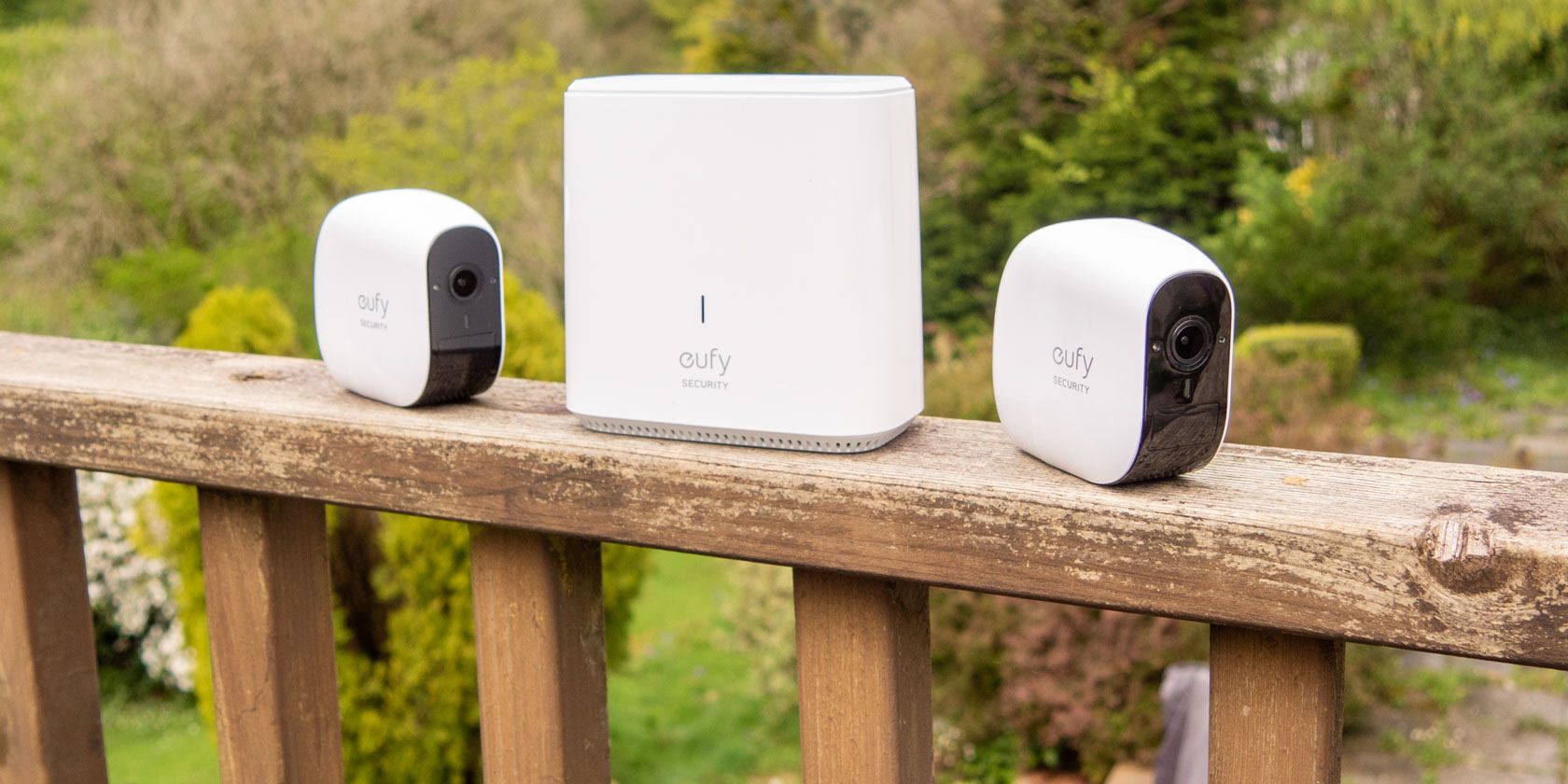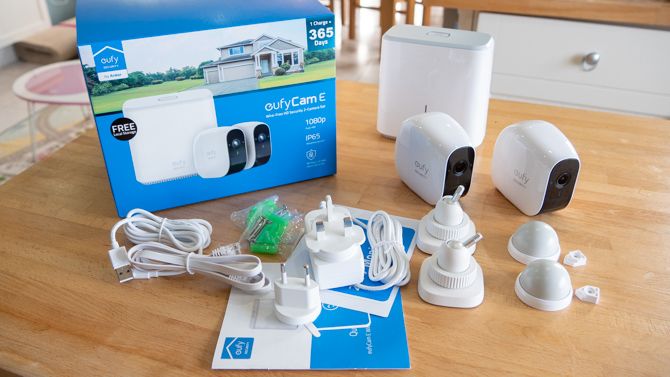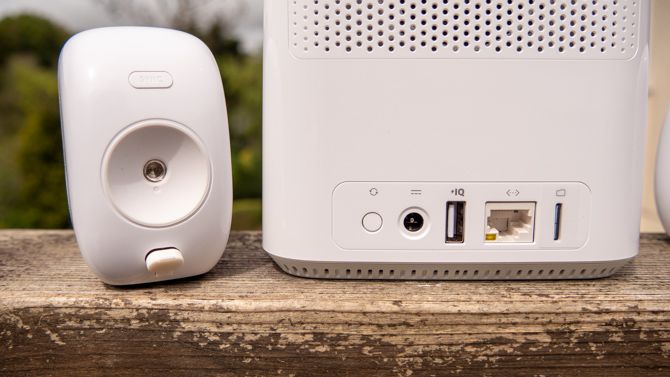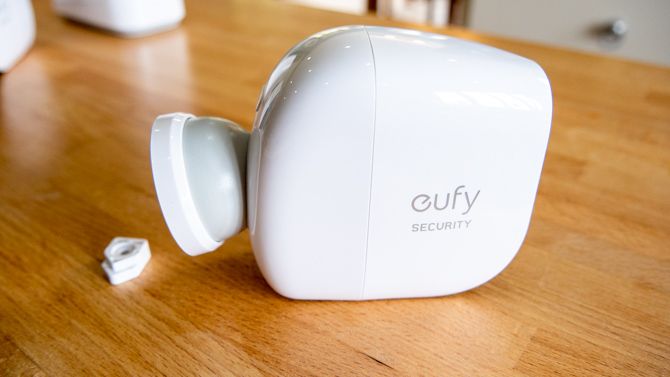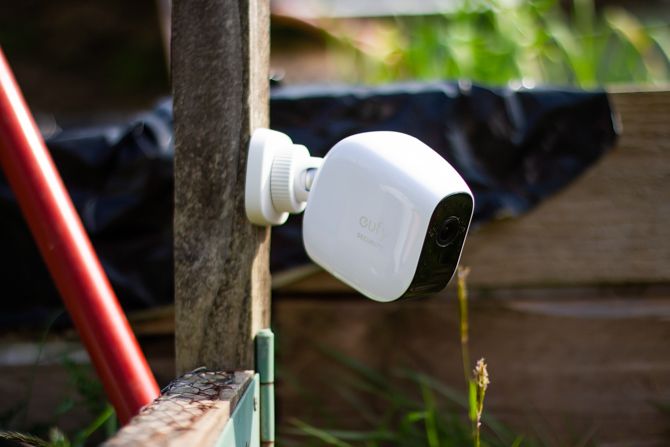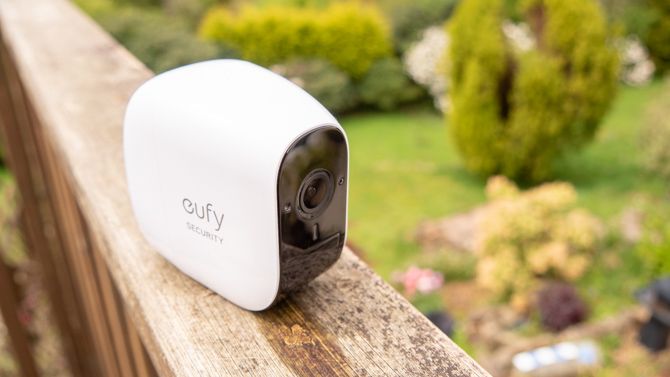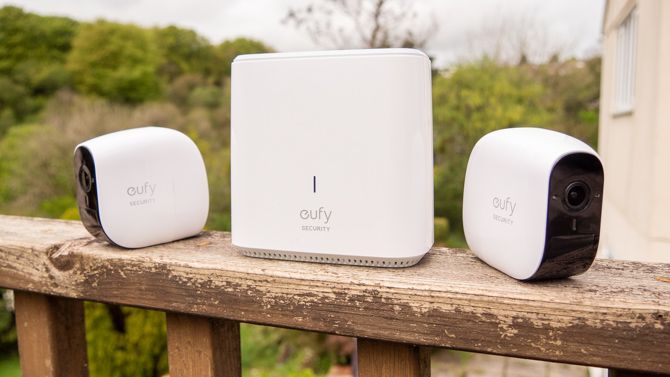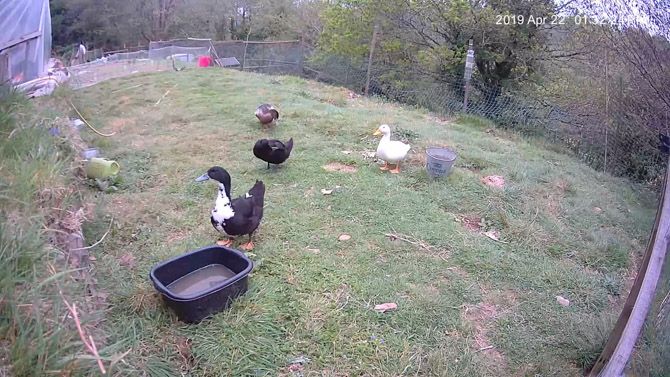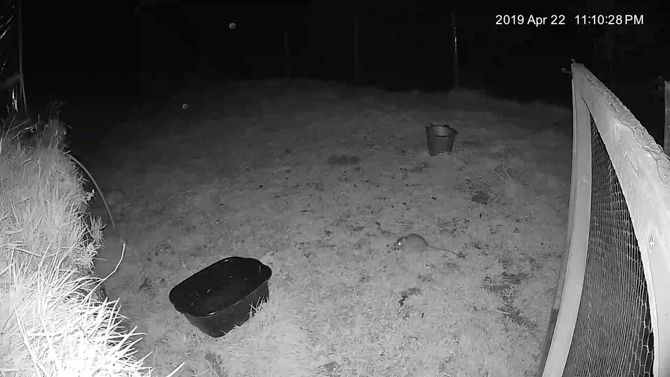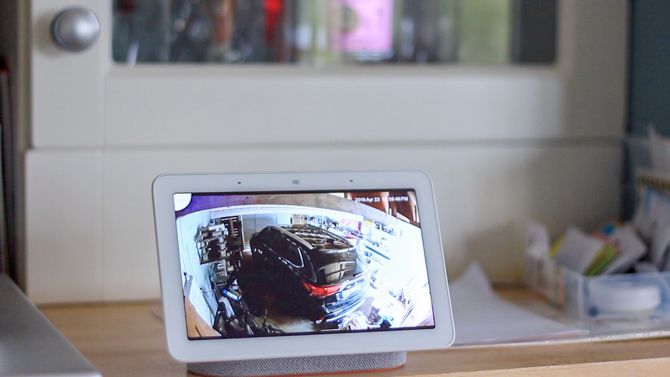EufyCam E
Easy-to-use app, reliable motion recording, great image quality, and long battery life make the EufyCam E a good all-in-one wireless security package. But if you need to cover a large area or have signal problems indoors, better look elsewhere.
Are you looking for an all-in-one wireless security system, cameras with 365-day battery life, great image quality, an easy to use app, Alexa Show / Google Home support, and yet won't overwhelm your own home Wi-Fi? That's a long list of requirements! But EufyCam E from Anker might be just what you're looking for.
Join us as we take a closer look at the EufyCam E 2-camera starter kit–and at the end of this review, we've got a complete set to give way to one lucky winner!
What's In The Box?
- Two EufyCam E security cameras
- HomeBase, with microSD preinstalled
- Two indoor and two outdoor mounts for the cameras
- Power adapter with Euro and UK plugs (yours may vary if you buy in the US)
- MicroUSB cable which can be used to charge the cameras from either the base station itself or from another generic USB charger
- Ethernet cable
- Mounting screws and wall plugs
- Quick start guide and deterrent warning sticker
The cameras are very compact, at around 3.1 x 3.4 x 2 inches, but heavy (12.8oz)– housing both a large battery and an incredibly powerful magnet for easy mounting. Keep them well away from sensitive electronics like hard drives. The HomeBase is lighter at only 12oz, measuring 5 x 5 x 2.6 inches. On the rear on the HomeBase you'll find a reset button, DC power in, USD (IQ) quick charging port, Ethernet, and microSD slot. The charging port is for charging the cameras directly from the homepage, without the need of yet another plug socket.
The 2-camera and hub kit costs $399, with additional cameras available for $180 each. What's the EufyCam E HomeBase for? Rather than operating on your existing Wi-Fi network, the cameras communicate over their own hidden wireless network, which is broadcast from the HomeBase. It's also where the recordings are stored. That ensures your own network isn't getting clogged up with video data!
The cameras feature talkback capability, as well as an accelerometer to detect when they're being tampered with, which can trigger a 100dB alarm. Even if an intruder does manage to steal one of the cameras, the footage will have been saved to the HomeBase, rather than on the camera itself.
Setting up the EufyCam E
Youll need to register an account before you can use the app. There's no option for unregistered local only access, nor can you quickly make an account via your Facebook or Google login. You'll need to activate your email address before you can use the app at all.
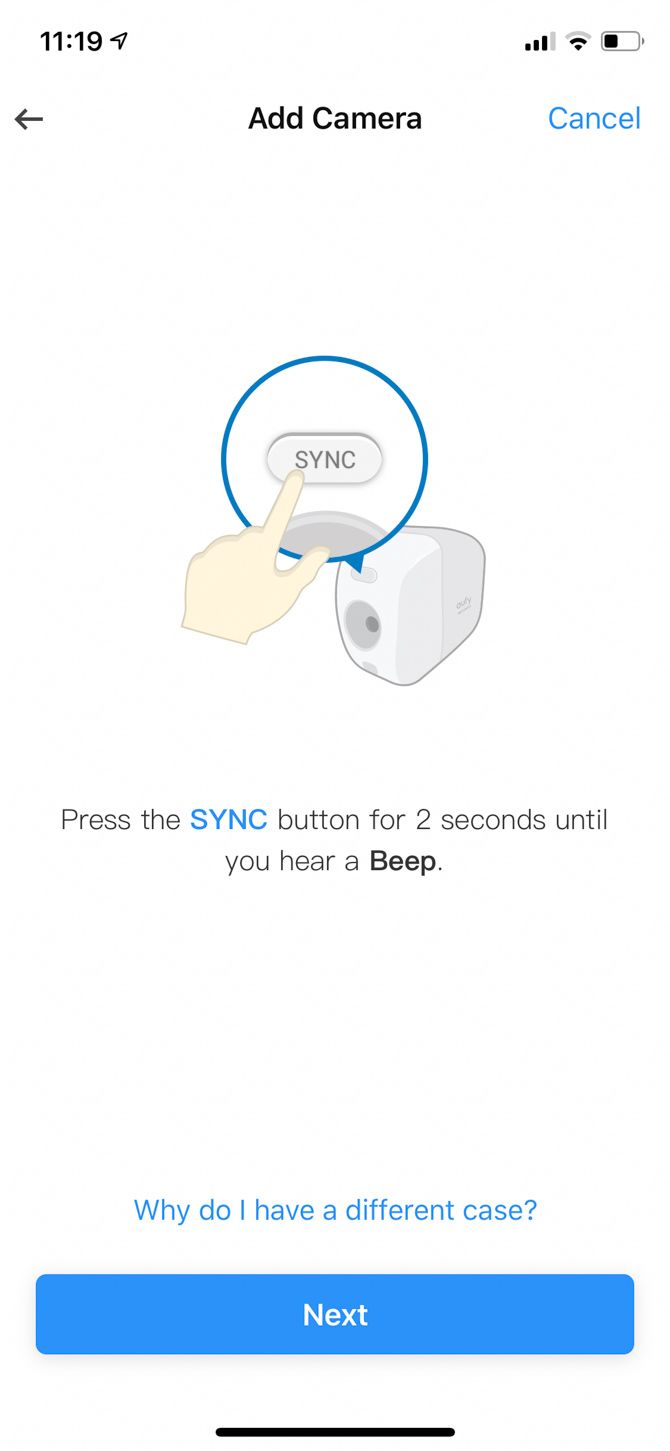
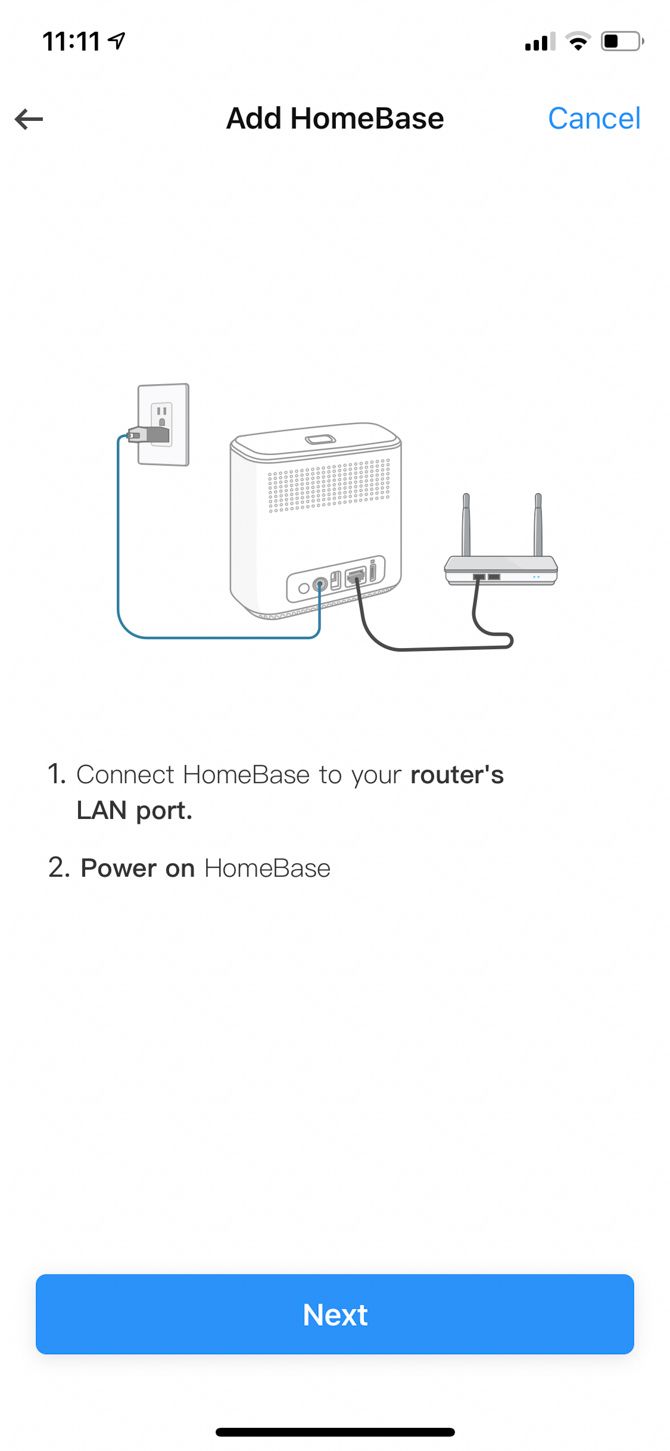
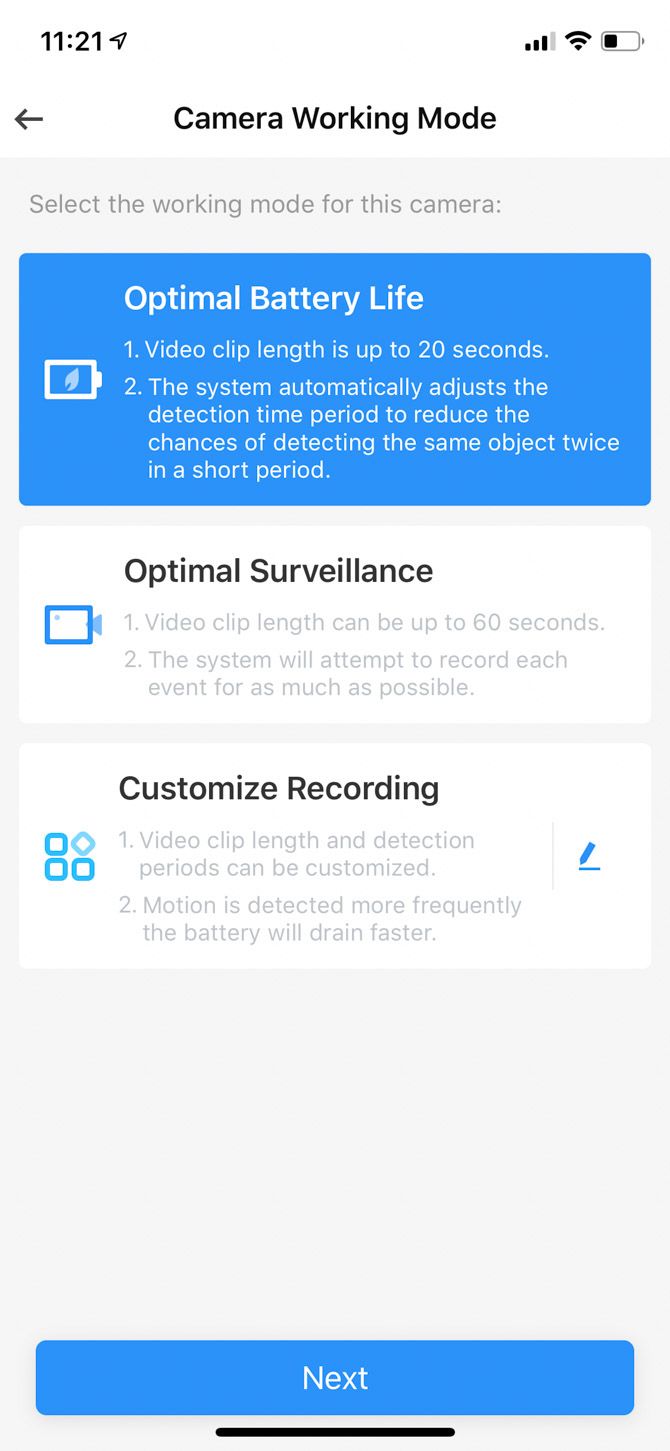
The HomeBase must be plugged into your home network via Ethernet (a cable is included). This isn't just for initial setup. The cameras themselves are completely wireless, requiring neither a power cable nor network cable–but the HomeBase needs both power and Ethernet at all times.
Adding the HomeBase and subsequent cameras to the app was easy, though did involve a lot of clicking the Next button.
When setting up a camera, you'll also choose the operating mode: either optimal battery life (20 seconds recording, less frequent), optimal for recording as much as possible (up to 60 seconds, more frequently), or can customize the setting.
Then you're all set. It's easy, but tedious. It would have been nice if the cameras were pre-paired out of the box.
Mounting the EufyCam E
Once you've done the initial setup and charging, you can move on to mounting the cameras in their final position.
Two of both the indoor and outdoor mounts are included, with all the screws and wall plugs you could possibly need. The indoor mount requires a single screw, onto which a steel hemisphere is placed. The cameras then magnetically clasp this, allowing for simple repositioning and easy removal.
The outdoor mount is a lot fussier, requiring two screws, as well as a good bit of fiddling to get the various bits together and at the right angle.
If you don't want to do any screwing to your walls, you can simply place the cameras on a tabletop or shelf–a rubber strip underneath ensures they won't scratch. Just bear in mind you won't be able to angle them up or down like this, so try to keep them around eye level.
Wireless Reception And Video Delay
The Eufycam E essentially broadcasts its own private Wi-Fi for the exclusive use of the cameras. This has a couple of inherent limitations.
Even when the EufyCam was placed next to the HomeBase, I found about a second of delay in the video stream. This increases to 5-10 seconds at the furthest reaches of the wireless reception. This made talkback features awkward. This may have been a quirk of my own network setup or non-ideal testing conditions, and your experience may vary, but it sounds logical given there are two routing steps in the chain, both of which introduce a delay.
If you already have a heavily congested list of networks in your vicinity, you're going to be adding yet another (albeit invisible one). If you only have a single home network and you live in the middle of nowhere as I do, you should have more than enough space on your channels for this to operate without interfering at all with your regular Wi-Fi.
But, if you already have problems with Wi-Fi signal penetration in your house, the EufyCam will fare no better. While there are ways to fix your own Wi-Fi, you'll be stuck with the relatively low powered hardware of the EufyCam E HomeBase. With part of my home built in 1850, thick stone walls stop Wi-Fi dead in its tracks. I was unable to test the EufyCam E indoors because of this. Even with the EufyCam HomeBase placed centrally, reception to the cameras in any rooms was poor. I've dealt with my home Wi-Fi by switching to an Ubiquiti Unifi network, with access points strategically placed on ceilings around the house, wired through PoE cabling in the loft.
Our Wi-Fi Feng Shui should help you learn about optimal placement of the Eufy HomeBase. It doesn't need to be next to your router, just connected by Ethernet, so you're free to place it more optimally.
Of course, there are also some benefits to having the EufyCams operate on their own wireless network. Regardless of how many motion events are generated and recordings made, your Wi-Fi won't clog up with the additional video traffic. The network is isolated, recording video to the microSD card located HomeBase. Should you need to access those recordings, it's incredibly quick and reliable, as the HomeBase is connected to your home network over Ethernet, so there's less wireless hopping involved.
I tested the maximum line of sight range of the EufyCams outdoors, and managed approximately 50m with no obstacles in between before reception was lost or delayed so much as to be unusable. Anker has promised a software update to perhaps increase the transmission power of the wireless chip, but realistically without an external antenna or two, this is unlikely to increase significantly. By contrast, my home Wi-Fi from a Unifi Outdoor+ access point can reach the park, about 200m away.
Image Quality and Motion Detection
At just 1080p, the EufyCam E cameras aren't the highest resolution available. That said, 1080p is a merely a measure of resolution. If not paired with a good lens or good sensor, the resolution is meaningless. EufyCam E offers a good 1080p, with clear details and vibrant colors. Make sure you view the video for a better idea of image quality, but here's a single screen capture.
At night, the IR LEDs aren't blindingly bright to cover a massive area, but do manage to capture details close-up.
More importantly, I found the motion detection to be reliable, with no false alarms. My event list was full of only actual events, not moving cloud cover or wind.
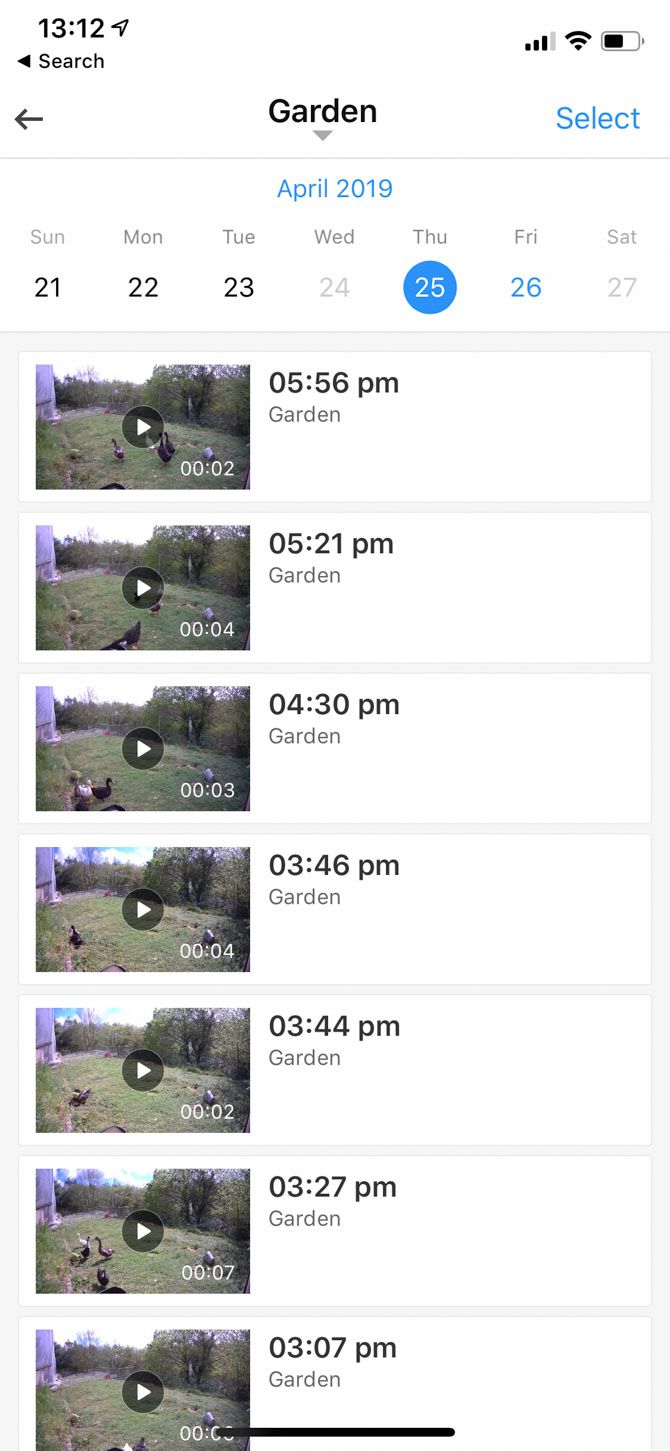
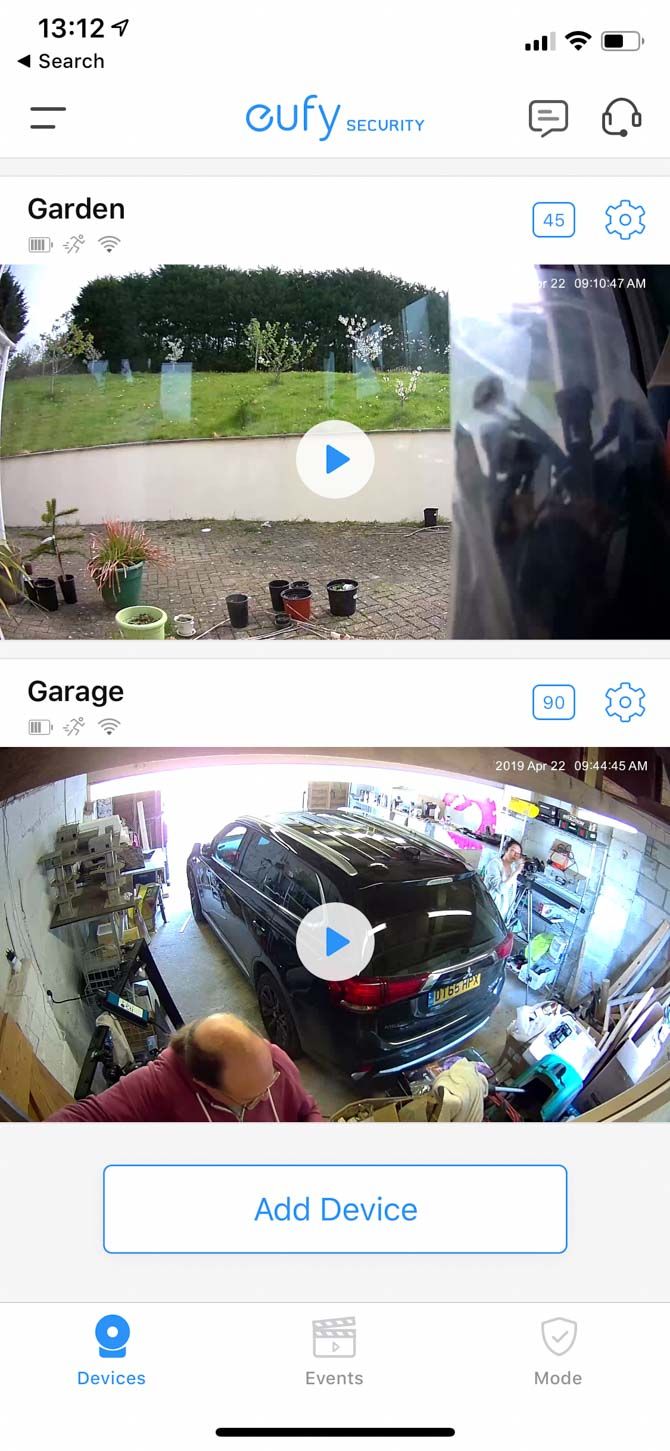
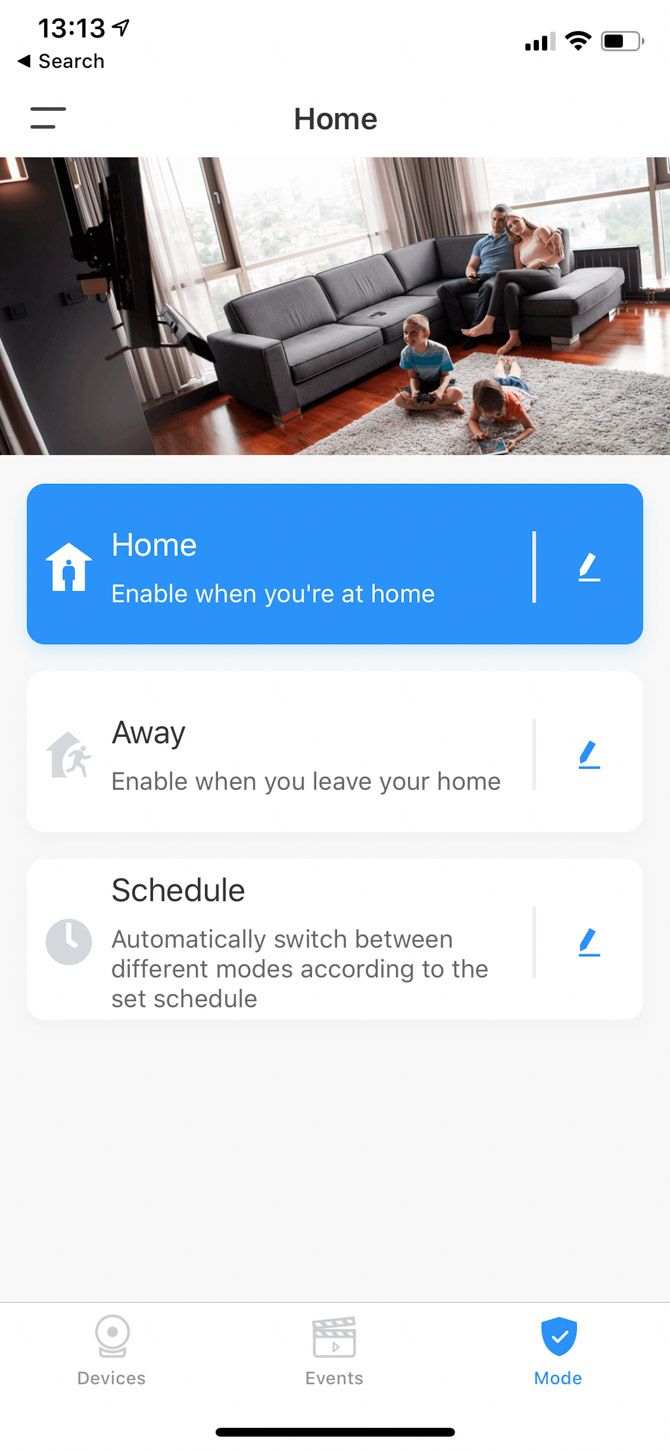
Google Home & Alexa Show
With support for both major smart home screens, account linking was simple and the cameras required no further setup. There is a short delay of a few seconds before the camera feed is shown, but it works reliably. Bear in mind that keeping the feed running for extended periods of time will deplete battery life much quicker than normal.
Is The EufyCam E System for You?
At $400 for two cameras, EufyCam is not a budget option, but the quality of image and ease of use of the app speak for themselves. You'll also save by not needing cloud hosting, and can still access the camera feeds and events reliably from anywhere in the world. Motion recording is reliable, and I found no false alarms during testing. Videos are stored on the HomeBase, so events are easy to view and download. Even with lots of events, you'll experience no additional load on your Wi-Fi. The cameras are IP65 rated, and work well outdoors as well as in. You can expand the system when you need with additional cameras, as well as a door sensor. The feature missing compared to other leading brands is facial recognition.
However, if you already have Wi-Fi issues around your home, with poor signal penetration due to the structure, or if you're looking to place cameras at opposite ends of a large building, the EufyCam E is unlikely to work for you. With no external antennas and a somewhat underpowered Wi-Fi chip, you're better off fixing your own Wi-Fi and buying security cameras that work directly on that. Or even better, wire your home up for PoE networking, and forget wireless entirely.

